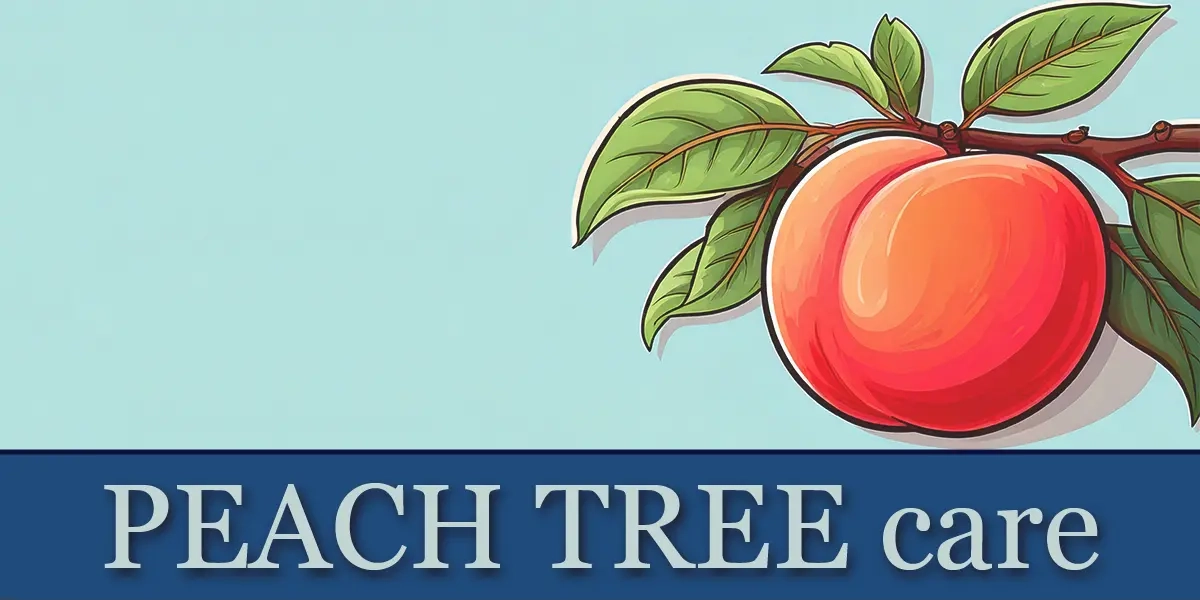Georgia is the Peach Tree State. Everywhere you turn, there’s a Peachtree avenue, shopping center, medical building, school, and so on.
Meanwhile, the Golden State contributes about 80% of the US peach harvest.
Southern California’s mild winters and warm, sunny summers mimic the tree’s native environment in China. However, SoCal also experiences occasional droughts and heat waves, which can hinder peach tree growth if unmanaged.
The Best Peach Varieties for Southern California
Not all peach varieties are a good fit for Southern California’s conditions. Peaches need a certain number of chill hours (cold temperatures between 32°F and 45°F during winter). Southern California growers should focus on low-chill varieties, which include:
- Tropic Snow: A white-fleshed peach with a low chill requirement and sweet flavor.
- Mid Pride: A yellow-fleshed peach, perfect for warm regions.
- Eva’s Pride: A freestone peach that produces fruit early in the season.
- Bonanza: A dwarf variety perfect for smaller gardens or container growing.
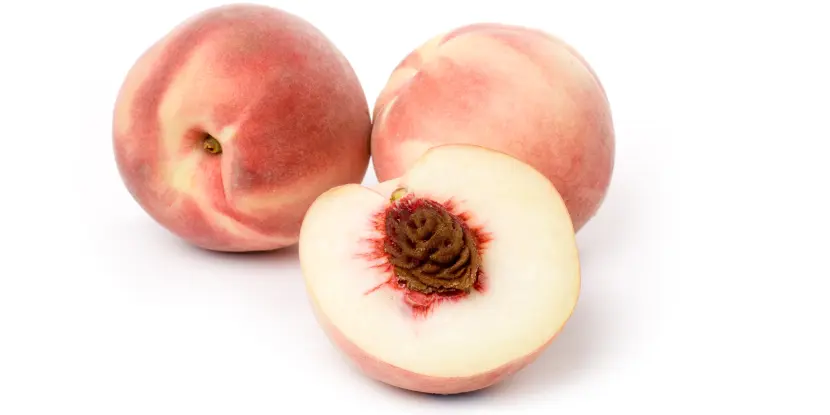
A sliced peach with white flesh.
Optimal Growing Conditions for Peach Trees
Light
Peach trees require full sun to produce abundant and high-quality fruit. Choose a planting site that receives at least 6–8 hours of sunlight daily.
Temperature Range
Peaches flourish in temperatures between 45°F and 75°F during their growing cycle but can tolerate highs of up to 95°F. Depending on the variety, they also need around 200–400 chill hours.
Soil
Peach trees prefer well-drained, sandy to loamy soil with a slightly acidic pH of 6.0–6.5. Amend the soil with organic matter like compost to enhance fertility and drainage.
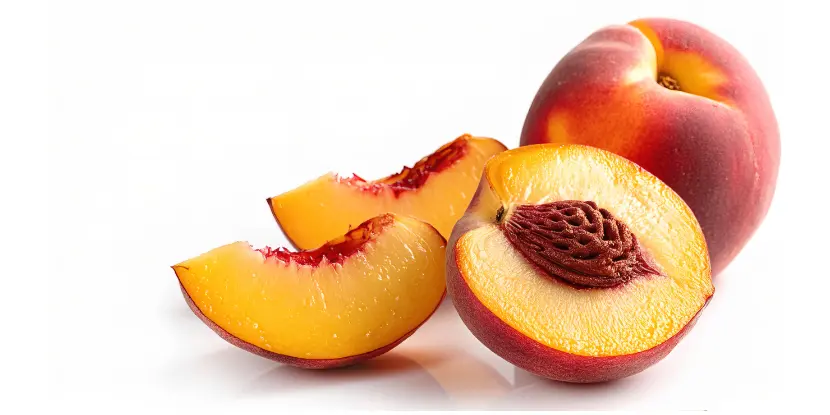
A sliced peach with yellow flesh.
Propagating Peach Trees
Peach trees are typically propagated through grafting rather than from seed. This ensures the new tree will produce reliable fruit.
If you buy a young peach tree from a nursery, it has likely been grafted onto a hardy rootstock suitable for your region.
Steps for Planting a Peach Tree
Plant your peach tree in late winter or early spring, when the ground is workable and the risk of frost is low.
- Pick a site with full sun and good drainage.
- Dig a hole twice as wide and as deep as the root ball. Loosen the soil at the base of the hole.
- Place the tree in the hole, ensuring the root collar (where the trunk widens) is slightly above soil level.
- Backfill with the loosened soil, gently firming it to eliminate air pockets.
- Water the tree deeply after planting to settle the soil around the roots.
- Spread a layer of mulch around the base to retain moisture and suppress weeds, keeping it a few inches away from the trunk.
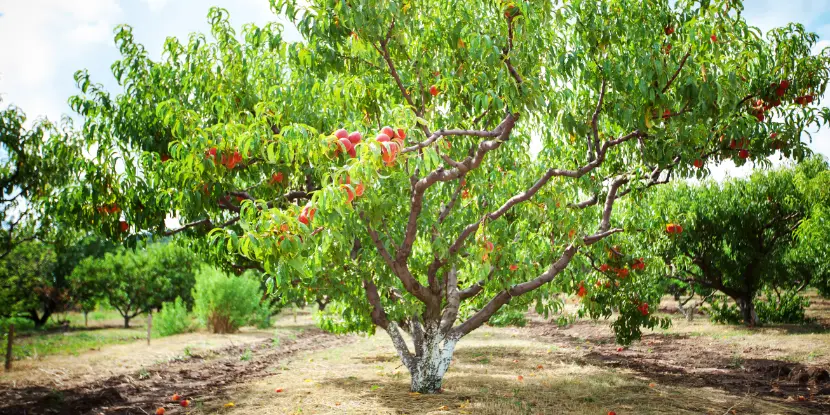
A mature peach tree in an orchard.
Peach Tree Care
Water
- Peach trees need regular watering, especially during their first few years.
- Provide about 1–2 inches of water per week.
- During fruiting, increase watering to prevent fruit drop, but avoid overwatering, which can cause root rot.
Fertilizer
- Feed peach trees with a balanced fertilizer (10-10-10) in early spring before new growth appears.
- Avoid over-fertilizing, which promotes excessive foliage growth instead of fruit production.
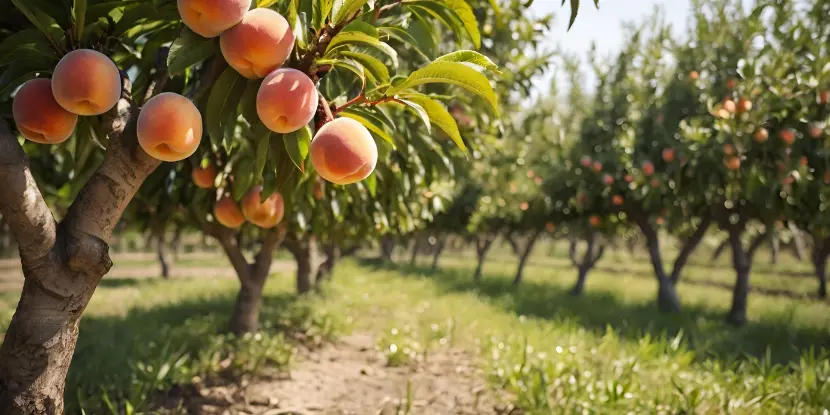
Peaches ripening in an orchard.
Pests & Diseases
Peach trees are susceptible to pests like aphids, peach borers, and leafhoppers, and diseases like peach leaf curl and brown rot.
- Use organic sprays like neem oil for pest control.
- Apply a copper-based fungicide in late winter to prevent leaf curl.
- Remove fallen leaves and fruit to reduce the risk of fungal infections.
Pruning
Peach trees require annual pruning for healthy growth and fruiting. Prune in late winter or early spring before the buds begin to swell.
- Remove dead, damaged, or diseased branches.
- Thin crowded branches to improve airflow and sunlight penetration.
- Maintain an open center shape to encourage fruit production.
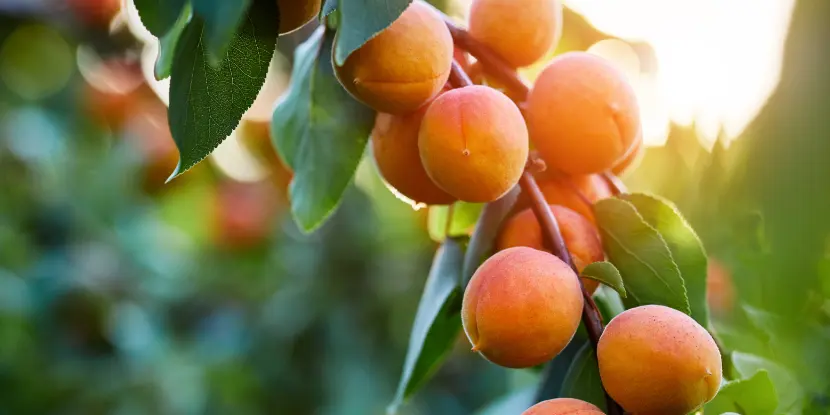
A peach tree branch laden with fruit.
Harvesting Peaches
Most peach varieties take 2–4 years to produce fruit and 5 months from flowering to harvest. Peaches are ready to pick when they develop their full color, become slightly soft to the touch, and have a sweet aroma. Harvesting typically occurs from late spring to mid-summer, depending on the variety.
Gently twist the peach off the branch to avoid damaging the tree. Eat fresh peaches within a few days or preserve them by canning, freezing, or drying.
FAQs: Peach Tree Care
Q: What’s a freestone peach?
This is a type of peach where the flesh easily separates from the pit. Freestone peaches are typically larger and have a firmer texture than clingstone peaches.
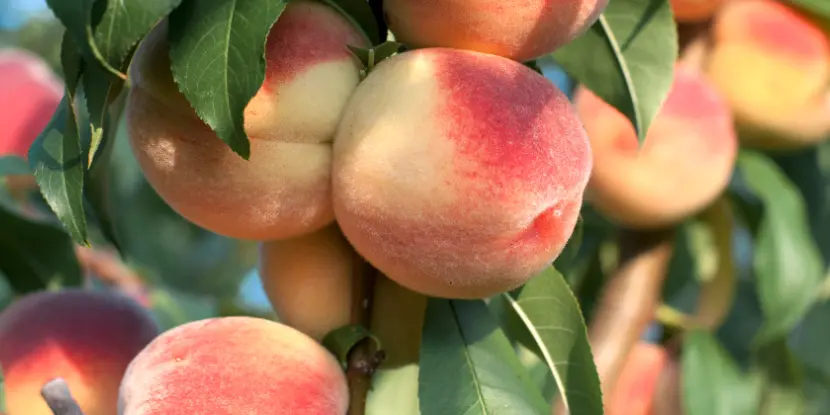
Closeup of ripening peaches.
Q: How long do peach trees live?
Peach trees typically live 10–15 years, though their most productive years are between 3 and 12.
Q: How quickly do peach trees bear fruit?
Peach trees usually take 2–4 years after planting to produce fruit.
Q: Are peach trees self-pollinating?
Yes, most peach tree varieties are self-pollinating. However, adding another tree can increase fruit yield.
Q: How many peaches can one tree produce?
A mature peach tree can yield 50–150 pounds of fruit annually, depending on its care and variety.
Q: When should I fertilize my peach tree?
Fertilize in early spring before new growth appears, and again midsummer if necessary.
Q: Can peach trees grow in pots?
Yes, dwarf peach varieties like Bonanza thrive in pots. Just ensure the container is large enough and well-draining.
Q: What are the signs of peach leaf curl?
Peach leaf curl causes reddish, distorted leaves. Treat with a fungicide in late winter.
Q: Do peach trees need chilling hours?
Yes. Low-chill varieties require 200–400 chill hours below 45°F, easily achievable in most areas of SoCal.
Q: How tall do peach trees grow?
The average height of a peach tree is around 13–20 feet, but some varieties may grow taller or shorter depending on their rootstock and growing conditions.

